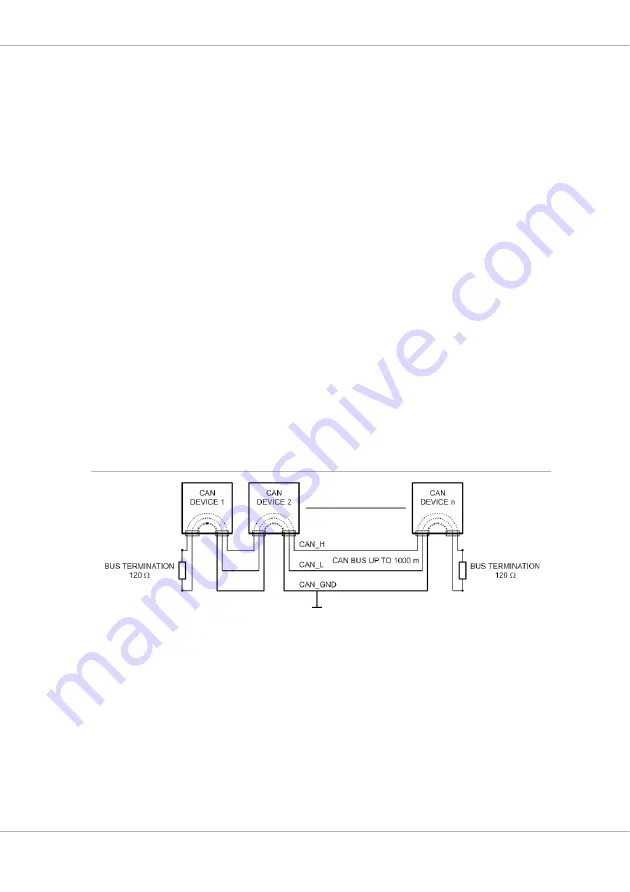
4.
APPENDIX
4.1
CAN Bus principles
The communication with the Call station Kits is done by a CAN bus protocol.
The network topology used by the CAN bus is based on the so-called “bus or
line topology”, i.e. all participants are connected via a single two-wire cable
(Twisted-Pair cable, shielded or unshielded) with the cabling running from one
participant on the bus to the next, allowing unlimited communication among all
devices. In general, it does not matter if the bus member is a call station, a DPM
8016 or another device. Thus, in fact, the call station kit can be connected at any
place of the CAN bus.
However, the DPM has multiple CAN bus controllers on board. Each of them is used
for his own purposes to optimize the system performance.
The CAN bus has to be terminated with a 120 ohms terminating resistor at both
ends. If the termination is missing or an improper resistor value is used,
network errors can occur as a signal is reflected on the bus at both bus ends.
Because of the superposition of the reflection with the original signal, the original
signal is blurred. This may result in the loss of data. In order to prevent or
minimize reflections at the bus ends, terminators are used as they "absorb" the
energy of the signal. Since the CAN interfaces of all EVI Audio appliances are
galvanically separated from the rest of the circuitry, network cabling also carries
a common ground conductor (CAN_GND) ensuring that all CAN interfaces in the
network are connected to a common ground potential.
Illustration 4-1: CAN network








































